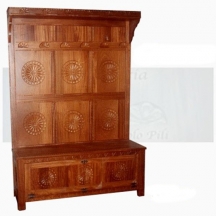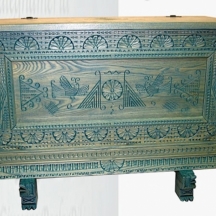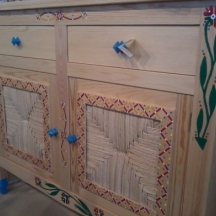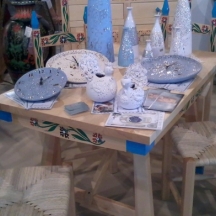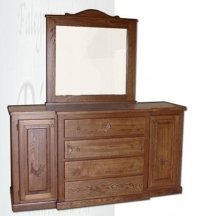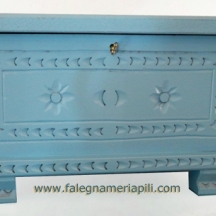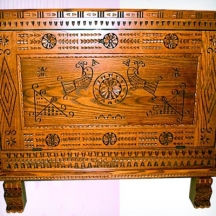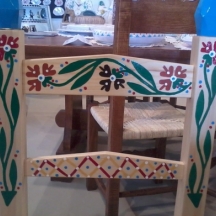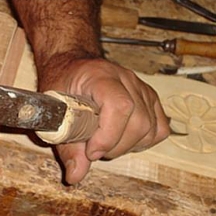The history of an artisan of wood
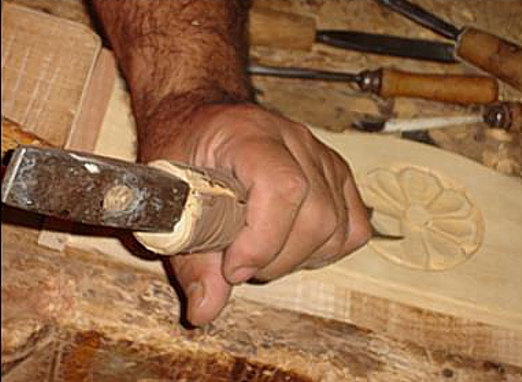
Different times for different furniture
The wisdom and the competence of a family, that lives since 1854 in the field of furniture, are determiner factors for the production of furniture that can last for a long time. The best wood makes the best furniture. The skill of the Pili Family is that concerning the choice of the most suitable wood for the realization of a specific furniture and for guaranteeing to it a great preservation and endurance.
From the great-grandfather, to the grandfather, to the grandchildren until arriving to the twenty three-year-old great niece Anna, the Pili Family includes various members who undertook the way of furniture. The art of wood involves a family tree that is 160 years old.
When he finished studying in the Industry Technical Institute, the Giuseppe Pili’s life has changed completely. Indeed, he was born and grown up in the joiner’s workshop of his kin and it was a choice and not a passion for him. When he was a child, he began living in the workshop and knowing this kind of art. The smell of the wood, its peculiarities and its manufacturing allowed the young Giuseppe to live an unique experience, composed by curiosity, passion and full creativity.
The decision of working as woodworker was automatic, given that he lived a whole life among "the artists of wood". He used to have this type of life such that it was a logic consequence to belong to this field. Dedication and enthusiasm emerged in a short time and the Giuseppe’s skill came quickly, creating amazement for him, too, considering that, before his path of studies was different.
In 2011 there was the turn of his daughter Anna. Obtained the diploma in the Teachers’ Institute, she understood that her future was another and she found the answer in the workshop where her father works. Through the paternal experience and lesson, she was able to intensify the passion and the pride of doing this job.
From the initial fear there was a next passage towards admiration and excitement. Anna felt a strong zeal towards this activity such that she learnt quickly the words, the use of the tools and the use of the techniques. Despite her young age, she was able to prove her skill generating a touch of originality, through updates about modern furniture and advices concerning the disposition of furniture following a particular style and a precise affinity.
The union between modern and traditional created the production of various kinds of furniture, where they are proposed again for instance the typical chairs representing Assemini village that present unique and original decorations. The ash is a kind of plant whose wood is used a lot by the artisans of the Pili Joiners’ workshop for the realization of furniture with unique shape and technique. Among the curiosities about wood there is that concerning the color, that outside a specific furniture is inclined to change and turning yellow, because light and heat modify the original features.
Furthermore, the veinings that are present on the wood can be deleted or at least attenuated through the technique of the "semilacquered", where it is used a diluted varnish that has the power of stopping the presence. The techniques of the manufacturing of wood must follow a particular iter for lasting for a long time. For creating a piece of furniture it is necessary a different time for each kind of furniture. It is impossible to calculate either an exact time or alike for every kinds of furniture. The time is proportional to the thing and to the technique.
The products realized by the Pili Joiners’ workshop are made both through a perfect artisan and hand work and through an excellent equipment. The carvings are made by hand through the use of tools such as some chisels called "sgorbie". These carvings are personalized and subject to additions compared to the classic symbol such as a black-bellied plover or a hourglass. The styles used are both that rustic – a combination of ancient and not lacquered models – and that minimalist – it is made a manufacturing linked to the simplicity, characterized by simple geometric shapes and colors to which it is not added any white or black dye. In addition to the furniture, the Pili Joiners’ workshop is involved also in the production of daily things, such as the utensils of kitchen.
The long lasting of this joiners’ workshop is given also to the appreciation by the customers, to the respect towards the buyer and to his requests. As the tastes of people who ask a specific product, so artisans offer the maximum for obtaining the desired result. Customer is satisfied in every request, because everyone has a personal taste and a different need.
